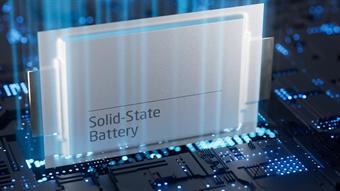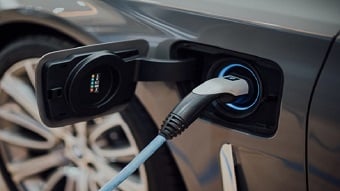Theories, calculations of internal combustion engines
Temitayo Oketola | December 14, 2022 Source: Argonne National Lab/CC BY-NC-SA 2.0
Source: Argonne National Lab/CC BY-NC-SA 2.0
In 1860, Etienne Lenoir invented the first commercially successful internal combustion (IC) engine. This engine was used to power a three-wheeled car at a speed of about two miles per hour. However, this engine’s single-cylinder design gave it a tendency to overheat and produce low efficiency.
IC engines have advanced over the years, as there now exist several IC engines with different designs, higher capability, and efficiency. However, these engines follow the same fundamental theories and calculations as Lenior’s engine.
How does an IC engine work?
An IC engine converts energy from a fuel and air mixture to mechanical energy. Its basic construction features an injector, inlet and exhaust valves, a fixed cylinder with a combustion chamber, a moving piston, connecting rod and a crankshaft.
The operation of this engine starts with the ignition (and combustion) of the fuel inside the cylinder. When this combustion occurs, the gas expands inside the cylinder, pushing the piston and causing the crankshaft to rotate. Then, the crankshaft motion is transferred to the vehicle wheels through a series of gears in the powertrain.
Common types of IC engines
IC engines generally come in two types: spark-ignition gasoline engines and compression ignition diesel engines. The working cycle of these engines typically consists of four strokes completed when the crankshaft completes two revolutions.
For instance, in spark-ignition gasoline engines, the first stroke (also called intake stroke) involves mixing the fuel with air before inducting this mixture into the cylinder through the intake valve. The second stroke involves upward movement of the piston, which compresses the air-fuel mixture before the mixture is ignited using a spark. Next, the combustion process begins, producing hot gasses which expand in the cylinder and cause a downward movement of the piston (third stroke or working stroke). Finally, the piston moves upward during the fourth stroke (or exhaust stroke), forcing the gasses through the exhaust valve.
 Strokes of a four-stroke engine: (1) intake, (2) compression, (3) working stroke, (4) exhaust. Source: Zephyris/CC BY-SA 3.0
Strokes of a four-stroke engine: (1) intake, (2) compression, (3) working stroke, (4) exhaust. Source: Zephyris/CC BY-SA 3.0
The four-stroke operation of the compression ignition diesel engine is quite similar to the gasoline engines. However, unlike in gasoline engines, the intake stroke of four-stroke diesel engines involves the suction of only air and not the air-fuel mixture. This air is compressed during the compression stroke, causing its temperature and pressure to increase. At the end of this compression stroke, fuel is injected into the cylinder, which ignites automatically due to the already-high temperature in the combustion chamber. Next, the combustion gasses expand in the cylinder and exit through the exhaust valve of the engine.
Learn more about the common types of combustion engines on GlobalSpec.
Important terminologies and calculations in IC engine construction
Before evaluating the performance of IC engines, it is important to first understand the following terms.
Top dead center and bottom dead center
The top dead center (TDC) is the position of the piston when it is farthest from the crankshaft. In contrast, the bottom dead center (BDC) is the position of the piston when it is nearest to the crankshaft.
Bore and stroke
Bore describes the nominal internal diameter of the engine cylinder, while stroke describes the distance that the piston travels between the top dead center and bottom dead center. Engines whose bore exceeds its strokes are usually said to be oversquare: they are typically used in automobiles. In contrast, engines whose bore is less than the stroke are said to be undersquare and are more commonly found in tractors and trucks.
Displacement (or swept) volume
It is the volume of the cylinder between the TDC and BDC. It can be calculated using:
 Displacement volume equation
Displacement volume equation
Where:
Vs = Swept volume
A = Piston area
L = Stroke
The engine's total displacement is the sum of the displacement of all the cylinders in the engine. For example, the total displacement of a six-cylinder engine will be the sum of the displacement volumes of all six cylinders. The engine capacity (or total displacement volume) of an IC engine can be obtained using:
 Combustion engine capacity equation
Combustion engine capacity equation
Where:
n = number of cylinders
Clearance volume
Clearance volume (Vc) is the volume of the combustion chamber above the piston when it is at TDC.
Cylinder volume
The cylinder volume is the sum of the displacement and clearance volumes. It is the volume formed when the piston is at the bottom dead center and is calculated using:
 Cylinder volume equation
Cylinder volume equation
Compression ratio
It is the ratio of the cylinder volume to the clearance volume.
 Compression ratio equation
Compression ratio equation
Performance of IC engines
When an IC engine generates mechanical power from fuel combustion, there is always energy loss. The performance of IC engines is usually evaluated using several efficiencies, including the indicated thermal efficiency, brake thermal efficiency and mechanical efficiency.
Indicated thermal efficiency
It is the ratio of indicated power to the energy in the fuel per second. It can be obtained using:
 Combustion engine therma efficiency equation
Combustion engine therma efficiency equation
The indicated power is the amount of energy developed in the cylinder, and it is given by:
 Combustion engine indicated power equation
Combustion engine indicated power equation
Where:
K = number of cylinders
Pm = mean effective pressure
L = stroke
A = cylinder bore
N = number of power strokes per minute
Brake thermal efficiency
The brake efficiency is the measure of the engine’s overall efficiency. It is the ratio of brake power (or usable power output of the engine) to the fuel energy in energy per second.
 Brake thermal efficiency equation
Brake thermal efficiency equation
Keep in mind that the brake power does not include the power required to fuel, lubricate, or circulate coolant to the engine.
Mechanical efficiency
Mechanical efficiency is the ratio of the brake power to the indicated power, as shown in the equation below:
 Mechanical efficiency equation
Mechanical efficiency equation
IC engines are highly efficient devices for a wide variety of applications. While this article provides basic information about these engines, engineers must consider several other things when choosing an IC engine for an application. For example, engineers must also consider air-fuel mixture, fuel consumption and material selection. Therefore, engineers are advised to reach out to combustion engine manufacturers to discuss their application needs.





Is there theory or calculation describing the timing of the spark re crankshaft position? That is, to obtain max power or other desired parameter?